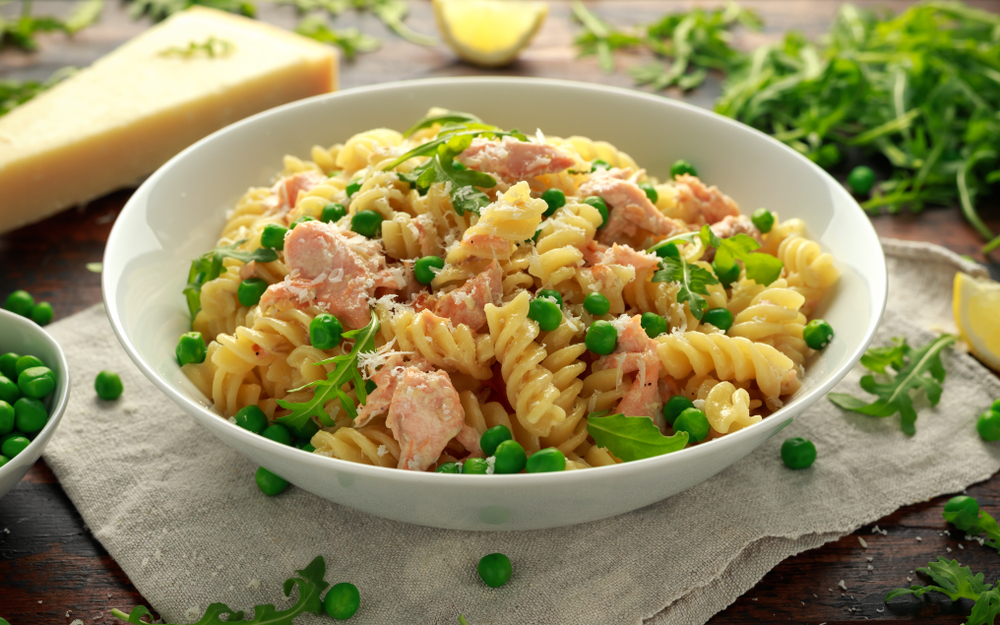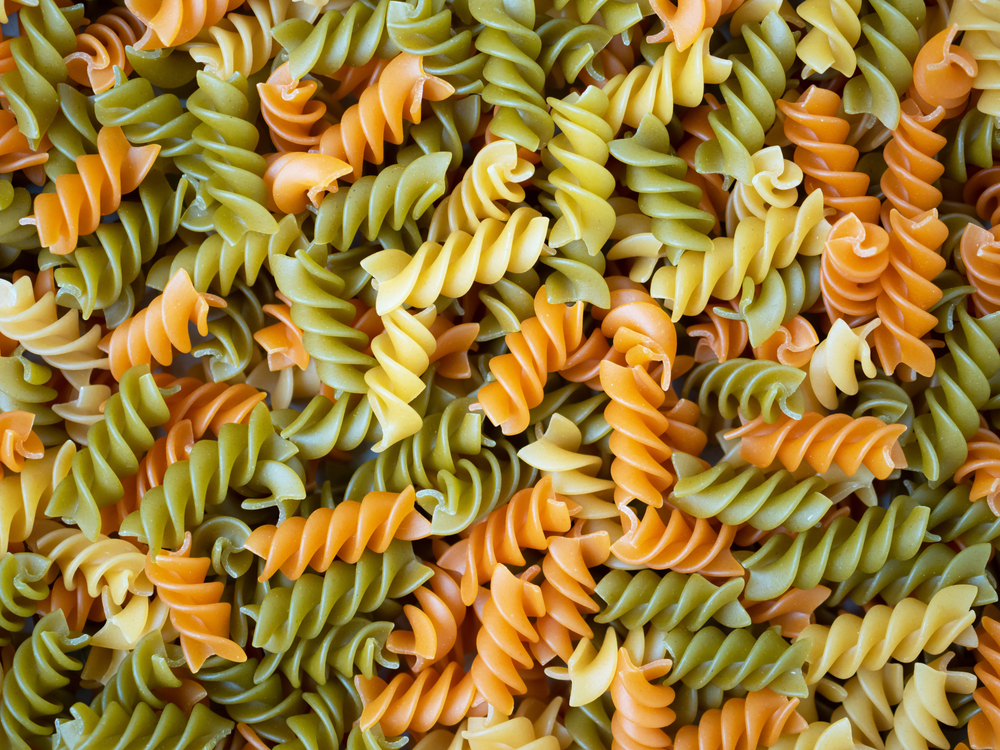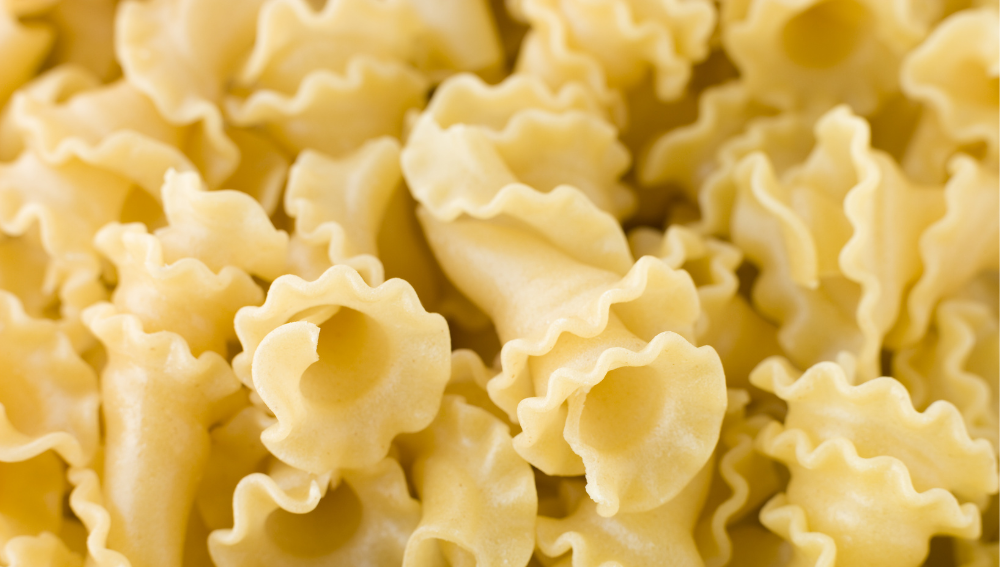There are over 50 different types of pasta. Fusilli and rotini are two of these, and often they are used interchangeably or mistaken for one another. They do look very similar, but they are two different types of pasta.
The main difference between fusilli and rotini is that fusilli has a spring-like shape. Rotini’s shape is more twisted and extruded.

Fusilli
The name fusilli comes from the word “fuso”, an Italian word that translates to “spindle.” This is because the fusilli pasta is made by spinning it around a small rod, creating its curly shape. Fusilli is a short-cut pasta and usually it is served with thicker sauces because the small holes trap in sauce, allowing each bite to be as equally flavorful as possible.
While it is made plain, the dough before making fusilli is sometimes dyed into fun colors. Beetroot, tomato, spinach, or cuttlefish can make fusilli red, green, or black. When you see bagged, springy, colored pasta at the store it is likely fusilli.
Another type of fusilli exists that is longer in length, resemblant of curly spaghetti. Fusilli can be bought both dry or fresh, the main difference is that when cooking dry, you would need to boil it for a bit longer.
The unique shape of fusilli makes it perfect for holding in sauces, so it is usually served with thick cream sauce. It can be made into a salad or layered with cheeses, sauces, and meats.

Rotini
The name of rotini pasta translates from Italian to “small wheels.” This is due to the fact that rotini has a corkscrew-like shape. It is similar to fusilli, the difference is the gap between their spirals. Rotini is twisted much tighter than fusilli is. The helix of rotini is slightly wider than fusilli’s.
Rotini is usually made from wheat and water, the same way most other pastas are. But, other varieties of rotini exist that are made from other grains like whole wheat flour and brown rice. Originally, rotini was made with a two-edged spiral, but now it is available with three-edged spirals as well.
Cooking rotini is the same process as cooking any other pasta. It works best with sauces that are tomato-based because of its tight ringlets. The tight spirals help rotini pasta retain flavor in sauces perfectly. Often, it is served in salads along with tomato sauce.
The Difference
When they are made with the same ingredients, fusilli and rotini can even taste the same. People often get the two mixed up because they are so similar in their looks and purposes. So what is the difference?

From afar, to an untrained eye, they will look the same. But up close, it is easy to tell the difference between fusilli and rotini. The strands of fusilli pasta are twisted into a shape that is spring-like. But the strands of rotini are twisted much tighter, into a corkscrew type shape.
The gap between the holes in their shapes is what makes the main difference. Rotini tends to trap in sauces and other ingredients better than fusilli, because it is wound much tighter. Fusilli has slightly wider gaps between each hole.
Rotini tends to be shorter than fusilli because of how it is wound so tightly. Unlike fusilli, rotini only comes in one color variety whereas fusilli can be found in multiple unique colors.
Can They be Used Interchangeably?
As discussed, fusilli and rotini are often confused for each other because of their similarities. Their shapes are slightly different, and of course their names are different. But besides that, these two pastas are not too unique from one another.
In short, they can be used interchangeably. So much so that in the US, it is not uncommon to see rotini mislabeled as fusilli. It comes down to one’s personal preference. The difference in their shape is so slight, but they are both ideal pastas for trapping in thick ingredients like cream sauces.

One can be used as a substitute for the other without really altering the flavor of your recipe. If you don’t have either on hand, substitutes for either pasta can easily work. Any short pasta with lots of holes and cracks in its shape can function the same way rotini or fusilli can.
Conclusion
All in all, rotini and fusilli are very similar to each other. Rotini is often labeled as fusilli in the US because their shapes are so similar. The main difference is that rotini is more tightly wound and slightly wider than fusilli. Fusilli also comes in multiple color varieties. But when they are made with the same ingredients, rotini and fusilli can even be used interchangeably because the difference between the two is so slight.







